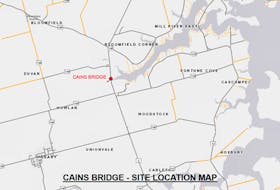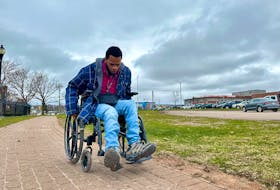Since this story was published, some eligability criteria for the Canada Emergency Response Benefit has changed. The changes are outlined here: Emergency benefit now open to those making $1,000 a month or less.
OTTAWA — People can be forgiven if they find themselves confused about the federal government’s plan to provide aid to millions of Canadians whose income has been adversely affected by the COVID-19 pandemic.
Over the course of a few weeks, the federal government has announced a number of employment insurance changes as well as two new programs meant to assist those who don’t qualify for EI.
The benefits would have been doled out to families via two EI-like benefits — one for illness, one for unemployment — of up to $900 bi-weekly for up to 14 weeks, but on Wednesday Finance Minister Bill Morneau announced the format had been streamlined into a single benefit — the Canada Emergency Response Benefit (CERB) — and that those who would normally qualify for EI would also be shifted to this new program.
SaltWire Network spoke with Nova Scotia MP Sean Fraser, who is parliamentary secretary to the finance minister, to get specifics on how the new benefit will work, who is eligible, how people can apply and when Canadians can expect to get their payments.
“What we’ve seen very quickly is it's going to be simpler to administer a single program that meets both needs,” Fraser said. “Someone might find themselves both sick and laid off, or needing time to take time away to watch their child, and what we're going to offer is essentially one-stop shopping regardless of the reason for which you've lost your stream of income.”
Who is eligible?
Anyone who has made at least $5,000 in the previous 12 months or the previous tax year and who has lost their income for any reason due to COVID-19 is eligible for the CERB.
This could be someone who had a full-time job or a part-time job, who was self-employed or who was a gig worker, such as a musician, an Uber driver or a contractor. As long as people meet the $5,000 threshold and have lost their income due to COVID-19, they can apply and will likely be eligible.
As for what counts as income loss due to the COVID-19 pandemic, the federal government is casting the net very broadly.
It can mean if people have been laid off either directly or indirectly as a result of the current economic situation, if people are sick, if a child is home from school and people must be home to care for them, if people are caring for a sick family member, if people feel they must self-isolate due to risk factors, if people are experiencing mental-health issues as a result of the pandemic and so on.
“The whole purpose is to ensure that no one who had income and has had that income interrupted is going to go without having access to any funds. We want to get this money to as many people as possible and limit the administrative hassle,” Fraser said.
What about those eligible for EI?
People who qualify for EI will automatically qualify for the CERB as well. If people are receiving regular EI or sickness benefits, those benefits will continue.
If a person’s application for EI is pending, they do not need to reapply: their application will be transferred to the new system and they will receive the CERB.
If people are EI eligible and have lost their source of income, they can apply through the normal EI system but will receive the CERB, not EI.
If people qualify for EI but they gain access to this new benefit, they will still be able to claim EI at the end of the 16-week period covered by the CERB. If they are already receiving EI benefits that expire before Oct. 3 when the CERB eligibility period ends, they can claim the new benefit at the end of their EI. People cannot, however, receive EI and the new benefit payments at the same time.
“One of the reasons this will be essential is we've seen almost a million new jobless claims in Canada in the past week. A similar week last year would have seen in the range of 27,000 new claims,” Fraser said.
“If we don't move quickly the system could become overburdened and people will be waiting unnecessary periods of time to get their benefits.”
How much will people get, and when?
All those eligible for the CERB, regardless of how much they made before, will get $2,000 per month, paid bi-weekly for a period of up to 16 weeks. The eligibility period ends on Oct. 3.
“In effect what this is, is a guaranteed basic income for anyone who has lost their stream of income,” Fraser said. “This is the easiest and most effective way to get money into people's pockets more or less immediately.”
As for when Canadians can expect money in their pockets, it’s not quite immediately: Fraser said it will take a few weeks to get all systems in place, but the application process is expected to launch the week of April 6, and benefits will roll out via direct deposit or cheque between three and 10 days after that. Based on these time lines, that means the earliest people can expect to see the first benefit cheque arrive is around April 9 and the latest is around April 20.
How do people apply?
Canadians will be able to apply for the CERB through a Service Canada online portal at a link that will be published widely when the site goes live, and they will also be able to apply over the phone or in person, where available.
The application process will involve providing information on who is receiving the benefit and swearing an attestation by checking a box.
“If you are able to say, yes, I'm not working, yes, I had an income and I'm someone who is not working because of this (coronavirus) outbreak, directly or indirectly, you're going to qualify for this new benefit,” Fraser said.
“We're not going to be requiring evidence or notes from employers or doctors that are only going to overburden an already overburdened system.”
Do people have to be laid off to qualify?
People can keep their job and still be eligible for the CERB, but they must not be receiving payment. This way, Fraser said, employers and employees can maintain a connection, and employees can connect to receive other benefits and restart their employment when society returns to normal.
“If people know their job will be there waiting for them, they’re less likely to break that relationship and start looking for other work,” Fraser said.
“It will allow society to essentially press the reset button more effectively once we get through this public-health crisis.”
Anyone who obtains the CERB, however, will not be able to have another source of income.









